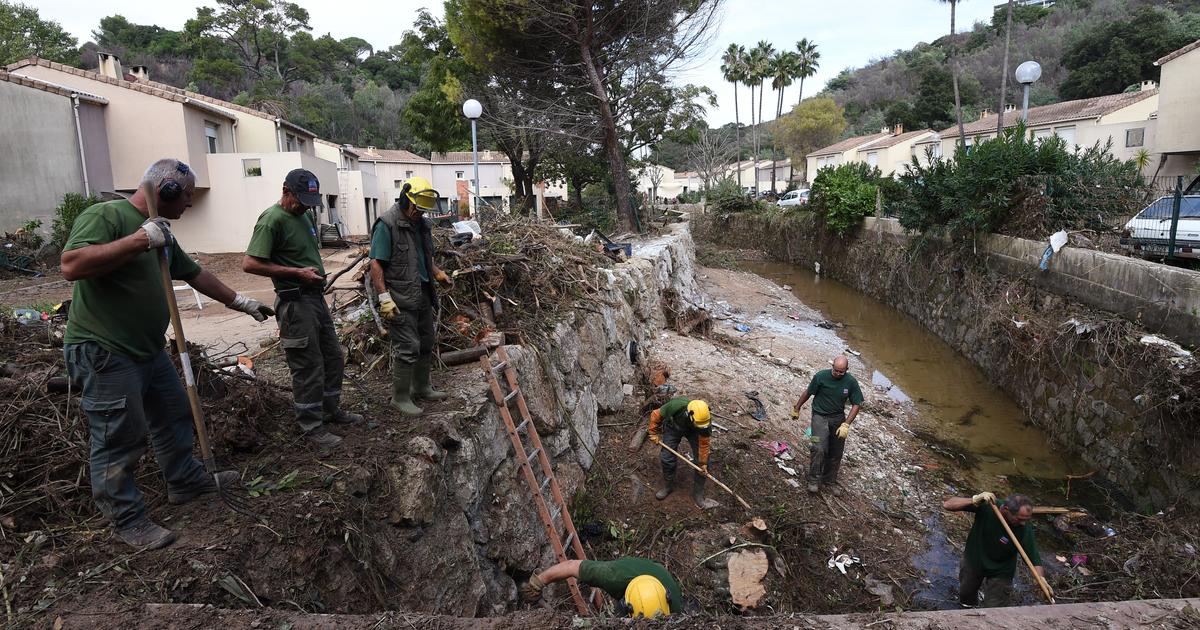Le Figaro Nice
The Côte d'Azur is experiencing a third consecutive "Mediterranean episode" this weekend, an intense rain-storm phenomenon which is likely to once again lead to flooding, landslides and mudslides throughout the entire French department. Alpes-Maritimes.
With nearly 100 mm of precipitation on average each time falling from a very dark sky, Nice, Cannes and Antibes, the main coastal cities, have already experienced some damage.
Nice councilor Christian Estrosi (Horizons) has twice requested recognition of the state of natural disaster.
Between 150 and 250 mm, at least, are expected until Monday.
This Saturday, the Alpes-Maritimes are placed on orange “rain-flood” alert.
During each of these episodes, the numerous watercourses of the Maralpine territory are scrutinized with attention and fear, especially since last year, the vast majority of them were completely dry.
Water is once again flowing under the bridges, as in the coastal Paillon river, but this time in worrying quantities.
Last weekend, it reached 127 cm while its alert threshold is 112 cm.
The Magnan also reached its critical measurement, at 115 cm, as well as the rivers of Var (178 cm) and Cagne (197 cm), which came close to it.
Climbs
of “an exceptional level”
according to Christian Estrosi, who was concerned about a meteorological phenomenon
“new in its periodicity”
.
“Imagine this same level of rain when the snow melts, I can’t tell you what would have happened
,” he warned during a press conference at the start of the week.
The snow remained frozen on the mountains of the southern Alps in quantities again almost unexpected (2.50 meters accumulated at Auron and Isola 2000 for example), but if the temperatures had been higher, there is little doubt that the watercourses would have largely overflowed their beds.
Read alsoParis-Nice deprived of an arrival at Auron due to the weather
Passive drama
A passive drama still haunts all the Riviera residents with the floods of October 3, 2015, which caused 20 deaths in the west of the department, without forgetting the storm Alex in 2020 (10 deaths) and in 2023, the Aline depression, in the Nice hinterland.
In 2015, torrential rains caused the Brague in Biot and the Siagne in Mandelieu-la-Napoule to overflow.
Cannes and Le Cannet also suffered colossal damage.
A trauma.
Since his election in 2020, Jean-Pierre Dermit, the Biotin councilor, has therefore made the fight against floods
“his absolute priority”
and displayed
“limitless will”
.
31 homes located in the river bed were razed, 30,000 m3 of embankment were evacuated, the width of the watercourse was increased by almost 35 meters, the banks reclassified as a gentle slope and vegetation was replanted, all for almost 20 million euros.
The agglomeration of Cannes-Lérins was also activated.
La Frayère was widened by 21 meters and largely vegetated to improve the hydraulic capacity which had been lacking in the past.
Retention basins were dug in the neighboring towns of Mandelieu-la-Napoule, Cannet, Mougins and even Cannes.
The work is continuing as part of a flood prevention and action program (“Papi”) and is already resistant to these repeated rain-storm episodes.
Also read “Never seen before!”
: in Nice, several dozen graves destroyed after the violent weather of the weekend
“Flash floods”
“The topography of the territory, with a lot of unevenness, means that the watercourses will rise very quickly but also drain very quickly
,” explains Cyril Wuest, meteorologist at La Chaîne Météo*.
These are flash floods, with a more brutal side and which can be even more dangerous
.
On its website, the prefecture of the Provence-Alpes-Côte d'Azur region also mentions the case of watercourses, which have
"often been developed, covered, diverted, thus increasing the vulnerability of people and property"
.
This is the case of Paillon, in Nice, which was entirely covered with concrete in the 1960s to make way for cars.
Since then, Christian Estrosi has demolished the national theater, which had been erected on it, and the Acropolis convention center, to extend the “green corridor”.
With the latest rains,
“this only reinforces the trajectory that we have taken”
, welcomed the elected official while these choices are still contested by him.
He also mentioned the case of the Guillaume-Apollinaire high school, located a little higher up.
“We saw that the water was not far from entering the building
,” he explained.
The councilor is therefore also thinking about its demolition and
“exchanges on this subject”
with his friend, Renaud Muselier, president of the region.
A study to assess architectural risks will be launched, they indicated.
Also read: The weather forecast for the weekend: rough weather with heavy precipitation and strong winds until Sunday
Cleaning
Above all, Christian Estrosi would like to clean the Var and Paillon rivers but says he is
“prevented by the State”
for environmental considerations.
This process involves removing accumulated sediment and would allow water to flow better.
“We will not accept this type of technocratic posture for long
,” the councilor said on the set of BFM Nice Côte d'Azur on Thursday.
If tomorrow there were deaths, cars washed away, houses under water, what would we say?
Since 1994, he swears he has never seen such risks.
This weekend again, the Departmental Directorate of Territories and the Sea (DDTM), a department of the prefecture, will closely monitor the potential rise in rivers as part of the “flood referent” mission.
In February, the city of Nice alone accumulated 237 mm of precipitation (compared to 11 mm last year at the same time) and while the average is 53 mm.
A record.
*The Weather Channel is a property of the
Figaro group.

